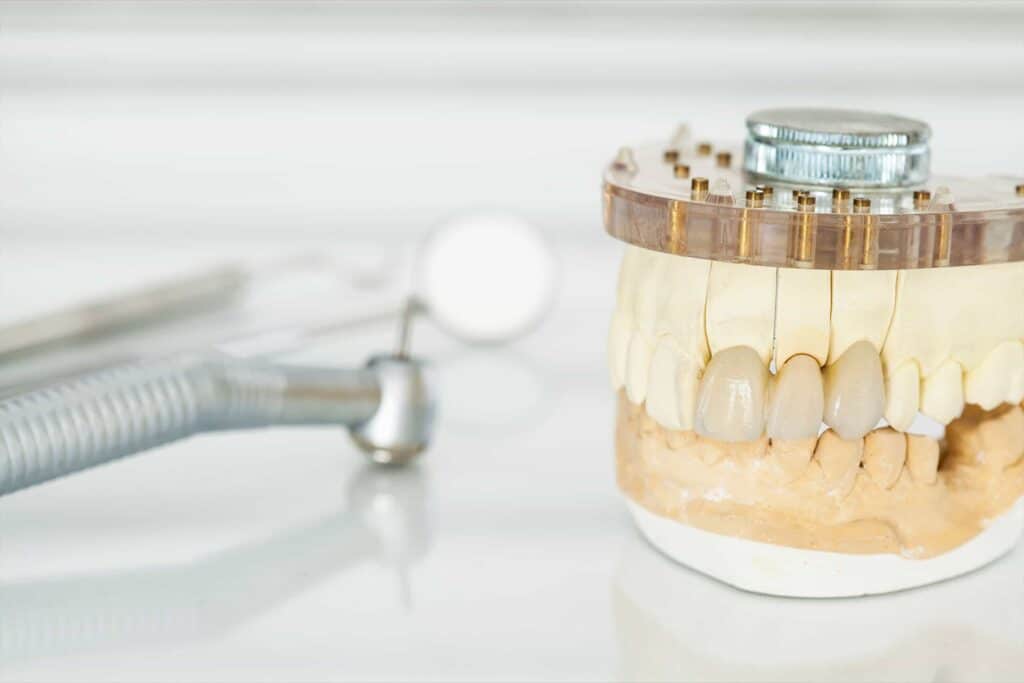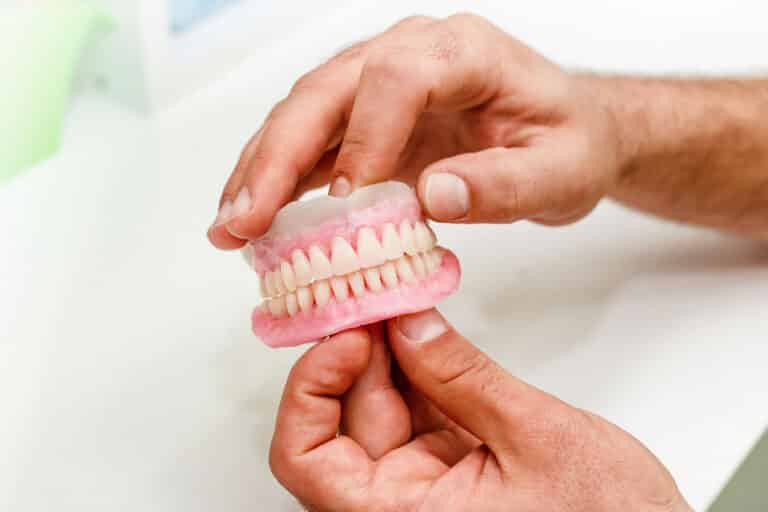Mewing has become a trend in recent years, though the concept has been around for longer. Mewing is an at-home technique people use intended to realign their teeth, change the shape of the jawline as well as facial structure, and align the chin and nose.
It’s inventor defined the concepts behind mewing as orthotropic treatment. It is meant to be an alternative to the traditional techniques of orthognathic surgeries followed with orthodontics. Both approaches are designed to improve or correct the maxillofacial bones.
To properly “mew,” the idea is to flatten your entire tongue against the roof of your mouth, even at the back. While your tongue flattens against the top of your mouth, you’ll close your lips and set your teeth together.
In short, mewing is associated with fixing cosmetic dental issues. Issues such as straightening teeth, and even correct facial skeletal deformities in the mouth and jawline.
Who Developed Mewing?
Mewing comes from the mind and experience of orthodontist Dr. John Mew. A British orthodontist, Dr. John Mew teaches the concept of orthotropics at the London School of Facial Orthotropics.
Dr. Mew has an extensive academic career, having studied orthotropics for decades. There are also controversies surrounding Dr. Mew and his teachings. Mainstream orthodontists oppose the treatment processes. Dr. Mew had also been stripped of his dental license by the General Dental Council. While Dr. Mew cannot practice dentistry without a license, his son, Dr. Mike Mew continues to put into practice the concept of orthotropics.
Dr. John Mew teaches that instead of focusing solely on traditional orthodontics and oral and maxillofacial surgery to fix issues with the teeth and jaw, there are non-invasive techniques to accomplish the same results. Mewing instead places a heavy focus on jaw posture, including retraining the way we hold our tongues.
While Dr. John Mew did not come up with the term “mewing,” it originated from a dedicated online following of people who wanted to change the appearance of their jawlines. Social media and various internet platforms share the idea of mewing as an alternative therapy to orthognathic surgery and orthodontics.
What Exactly is Mewing Supposed to Accomplish?
Mewing is intended to correct the underdevelopment or deformities in the maxillofacial skeleton. In short mewing is supposed to correct head, neck and tongue posture. It is also supposed to improve the position of the jawline and teeth to achieve harmonious facial development.
The cause of these malalignments have been controversial for many years with essentially two trains of thought. One camp believes the cause is due to genetic factors. The other believes they arise from abnormal function and position of the tongue and jaw muscles. As more research goes into definitively determining the cause, it is important to take all sides into consideration.
Aesthetics, function and comfort are a couple of contributing factors to why people attempt mewing. Perhaps they have jaw pain, and they hope to realign it and eliminate that pain. Another could be that they’re unhappy with the appearance of their teeth. Traditional surgery and orthodontics may also not be an option due to cost or fear of dental procedures. These issues may prompt people to try mewing as an alternative to orthodontic treatment.
Regardless of why people try mewing, the process is supposed to reshape the jaws in order to create more room for ideal teeth positioning, all based on changing the tongue position and posture. People across the internet also claim that it may also help with sleep apnea and sinusitis, however these health benefits are from their own personal experience and not scientific studies. As of today, there are no peer reviewed studies that can back up these health claims.
Mewing and Palatal Expansion
Palatal expansion is one of the purposes behind mewing. Typically done with a palatal expander placed by an orthodontist or general dentist, palatal expansion can widen the upper jaw to allow for better alignment with the bottom jaw.
While palatal expansion is more common in children because the jaw is still growing, it’s possible in teens and adults. This can be helpful for those struggling with nasal breathing, crowded teeth or some forms of sleep apnea. Some claim mewing can do the same as a palatal expander, but there is little peer reviewed data to support this claim.
The techniques and exercises behind mewing is aimed to slowly over time expand the upper jaw, which also changes the facial structure in addition to creating more space for crowded teeth. The theory is that by widening the jaws, the nasal passages and airway would also become wider. Wider airways would then help a few health issues, in particular sleep and breathing problems.
What are the Risks of Mewing?
There are certainly some risks that come with consistently practicing mewing. Your jaw is complicated and has many moving parts, and changing (or attempting to change) one can affect others. Suppose you try mewing, and you’re successfully realigning your jaw over an extended period of practice.
This unadvised jaw realignment can lead to plenty of other dental problems, including:
- Pain or dysfunction in your jaw
- TMJ disorders
- Misalignment of the upper and lower jaw
- Tooth misalignment
- Teeth being pushed out of the bone
- Loose or chipped teeth from the pressure of misalignment.
If you want to attempt mewing, ensure that you have proper supervision from a licensed processional such as orthodontists or general dentists who are familiar with its concepts and orthotropics. It is important to understand the risks and benefits prior to attempting potentially harmful home treatment.
Does Mewing Actually Work?
It’s the answer you’ve all been waiting for; technically, the concepts behind mewing can work. Changing the posture of the tongue in your mouth could assist in palatal expansion, but it’s dangerous and ill-advised to try on your own. An article by the Journal of Oral and Maxillofacial Surgery states that while the concepts behind it are plausible, it is important to know that it is not based on sound scientific evidence to make it a viable alternative treatment1https://www.joms.org/article/S0278-2391(19)30349-0/fulltext.
There are a lot of factors to consider when attempting this technique. For instance the proper tongue posture may be difficult or impossible if there is a tongue tie. The tongue itself may not be strong enough without myofunctional therapy as well. The biggest risks related with the practice of unsupervised mewing is whether or not is the technique applied correctly without causing damage to the facial structures and jawline.
If you’re serious about trying mewing, you should speak with a professional to determine if it’s a process that could work for you. Everyone has different levels of severity concerning jaw misalignment and crooked teeth, and mewing without guidance could cause long-term damage.
Mewing requires supervision and expertise. Without these things, it’s simply a fad similar to fake and self-applied braces that led to thousands of cases of tooth damage. Following trends to alter the appearance of your mouth without dental advice can be dangerous. This is especially true for children, whose growing facial structures are easier molded than adults.
We’re not saying that the concepts behind mewing are ridiculous, but we suggest that you consult with your dentist and go from there.
Is Mewing Safe?
With proper technique and oversight, mewing can be performed safely. However just as it is ill-advised for a novice weightlifter to lift heavy weights without any education or training. it is also ill-advised to practice it without proper oversight.
It is important to understand the motivation behind wanting to practice mewing, whether it has to do with changing the facial structure or wanting some of the potential benefits. If it’s simply to follow a fad, it may not be worth going through the exercises.
It is also important to understand if there are physical limitations that would prevent proper tongue position and movement. Ensuring the exercises can be done correctly is important, similar to proper form when doing heavy weightlifting. Improper exercises have the potential to cause unwanted orthodontic movement, which may cause damage and require professional intervention.
So before attempting mewing, find a dental provider who not only understands the concepts and research but also is willing to help patients who wish to attempt mewing.
The Drive Behind Mewing
To understand an at-home medical trend, we must first understand what drives people to attempt them. Sometimes it’s fear, sometimes it’s cost, or it can the trendy thing to do. Mewing without professional help could save you hundreds (or thousands) in medical expenses, depending on the severity of your jaw issues and whether you have dental insurance. However improper mewing can also cause significant and expensive damage.
We completely understand why someone would want to try mewing before visiting their dentist. However the potential risks far outweigh the benefits. If you’re seriously considering mewing, or are experiencing jaw pain or issues with your teeth due to misalignment, we recommend discussing all options with your dental professional before attempting at home therapies.
Was this post helpful?
References
- 1





